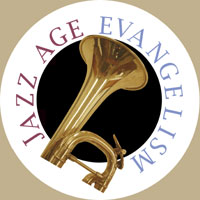

|
Outreach
|
Excerpt (5-3/4 minutes) from tape T1 in Collection 273, oral history interview with Harold Day (a Tabernacle volunteer) recorded by Bob Shuster on May 31, 1984.
DAY: Well, Rader had in mind to evangelize. That was his purpose, you know. Not to make big groups, but to...but to spread out, you know, in homes, you now, four or five homes where we gathered. And not to make big crowd. And in it, I would be responsible, you know, the...for the...picking somebody out that...that could go other places and spread out and certain not to get too many. And his idea was to...to...not...to spread out, you know. [unclear]. That was his motive. And then to win them for the Lord and Christ like that and teaching them in homes where you couldn't reach otherwise, you know. Sometimes, I mean, you can always....
SHUSTER: Well, who belonged to Courier classes? Who...who attended?
DAY: Well, mostly you'd have to be, well, trained or been a born again Christian. You'd have to know that. He wasn't particular. Any...anybody that would....willing to do this, you know. A lot of people, Christian, maybe they didn't want to, you know, spend their time this way. So anybody that would have a desire to teach and to win souls and...and get out spend some of their time that way.
SHUSTER: So the Couriers were people who were willing to set up neighborhood Bible studies?
DAY: Yes, Bible studies, mainly, yes.
SHUSTER: What kind of preparation did you have? What kind of...?
DAY: Well, they had a Courier book. I don't know if we [break in recording].... Well, in there was...you'd have to study that: how to talk to people, learn Scripture verses, how to win them to Christ, the motive and...and things like that, so you...so you would have to be well-grounded in the Scripture, you know. The main thing was how to approach a person and how to win them for Christ, and...and...and mostly to read the Bible and...and understand it, mostly. And he gave us...he'd teach us, you know, like how to talk to people. Mostly he had to evangelize. That's what his motive was. You know, a few here, a few there, [unclear] scatter [laughs] and move...move on, you know.
SHUSTER: Was there ever any conventions or meetings there for people who belonged to the Couriers?
DAY: Oh yeah. Well, of course, they had...one had to...I mean, once a week we had to check in, you know, and...and report to what...what success we had. And so we'd gather and we'd have a...a...a...a...a flag, you know, with a number on it. I remember I had a number there. And at Courier class, each one would have a flag there and their group. And they would report to the group what wedid, how many souls we won, and what happened, and....
SHUSTER: Now who was in this group?
DAY: Well, all the classes are the
Courier deacons, you know.
SHUSTER: And the deacon is the person who headed the various levels.
DAY: They had their group there, see. And they would have to report how they made out and how many souls they won. And if you stood up, like that, you know, not to have too big of a number, and...and appoint somebody else and they'll go in another place in a different neighborhood [laughs] and section. And every week we'd report to the Chicago Gospel Tabernacle to the...to the...oh, Rader or to whoever was in charge. Sometime Rader would...wouldn't be there and somebody else would be in charge. But Rader was most of the time there, and he would like to know how things came out. And then, of course, in the middle of the Tabernacle...I don't know...was a great big circle. I don't know if...probably Merrill [Dunlop] had told you what...flag of each nation, just about.
SHUSTER: Just flags you mean around the Tabernacle?
DAY: Yeah, or no. Inside of the Tabernacle, a big circle, maybe thirty feet diameter, with the nations and the countries that they had sent missionaries out hanging in there.
SHUSTER: Countries that the Tabernacle had sent missionaries to?
DAY: Yes. So that was always interesting. I'd look at a flag [laughs], you know.
SHUSTER: Did...you mentioned before that you didn't want the Courier groups to get too large.
DAY: Yes.
SHUSTER: What was the average size of a Courier group?
DAY: Well, eight or nine or ten, no more than twelve, yeah. Maybe some had, but as soon [laughs] as you get too big, you'd pick somebody out that's willing to take over another group. And so when you get around nine, if...if somebody's in there that would be glad to, you don't have to require if they would...you...you force nobody. If they...they have to have it in their heart to do it. And...and they would take and they would go a different neighborhood, maybe half a mile away [laughs], take a different section, work in that way. And so then...then every once in a great while, they would have them all get together, the whole bunch, you know, how many new sections and new...new leaders. In fact, and so [one] time we had a whole bunch. Maybe...I don't know how...150, 200, maybe. I don't exactly all the people, new ones that we won, and some new converts, and stuff like that. They'd testify that they'd got saved and went to their meetings.
Leave the exhibit to read the descriptive guide of the Harold Day collection